Art Fairs
Lower Price Points, Higher Spirits: The ‘Comfortable’ Vibe at Art Collaboration Kyoto Drove Solid Sales
ACK's unique approach, requiring collaboration between local Japanese and international galleries, is working.
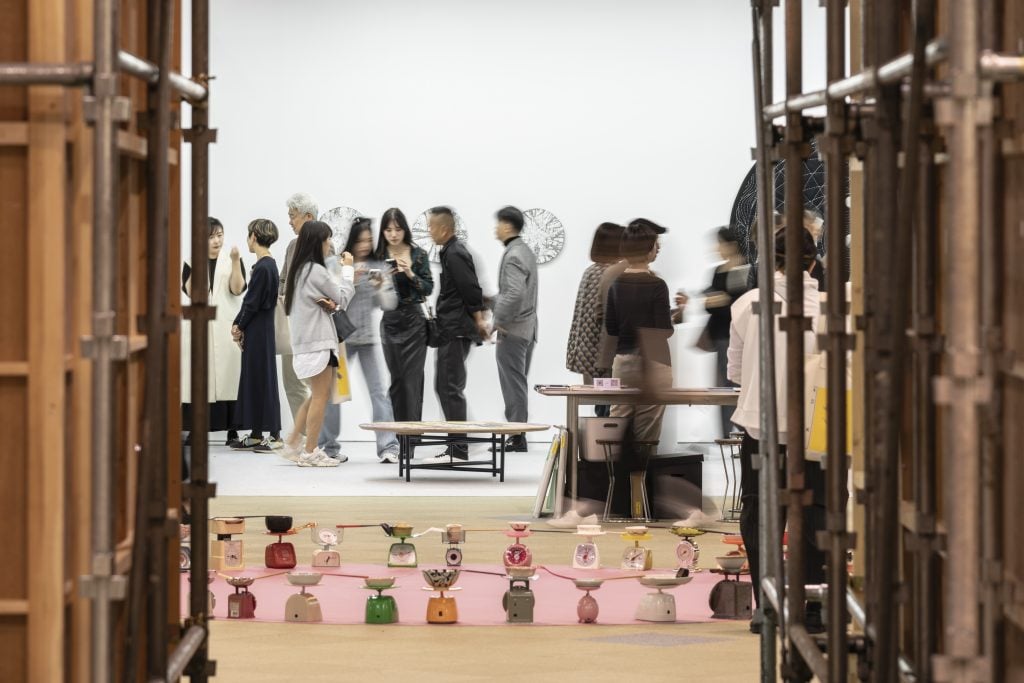
ACK's unique approach, requiring collaboration between local Japanese and international galleries, is working.

Vivienne Chow

“Comfortable” is what one would say when describing their home or a place where they can relax and be themselves. But when you hear gallerists and visitors unanimously calling an art fair comfortable, you can’t help but wonder if something has gone very wrong—or perhaps, very right.
It was the most frequently heard descriptor on the fairground of Art Collaboration Kyoto (ACK), a four-day fair in the iconic Japanese city that concluded on Monday. The third edition taking place at the Kyoto International Conference Center (ICC Kyoto) featured 64 galleries from 16 countries and 24 cities, where 33 of them were first-time exhibitors.
ACK may be small compared to its big international brethren that present hundreds of galleries, but it is perhaps the fair that features the biggest number of happy gallerists—even the usually serious ones appeared to be relaxed and beaming with excitement, greeting visitors with a wide grin while engaging in deep conversations with them.
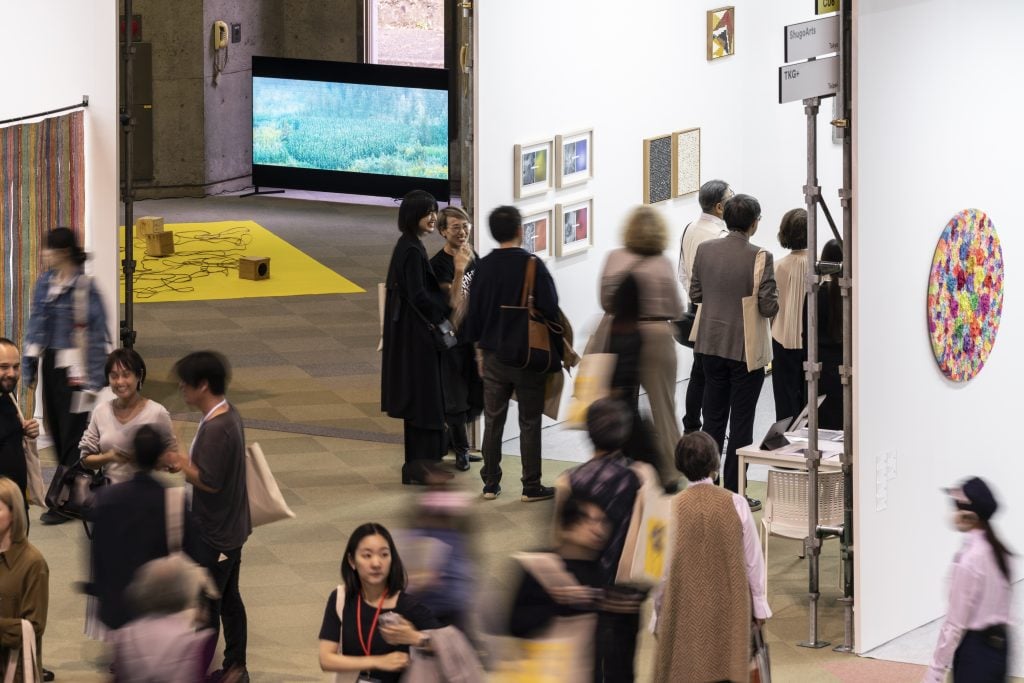
Han Ishu, Knitting a Cornfield (2021) (top left hand corner) featured in Art Collaboration Kyoto (ACK) 2023 public program. Courtesy of ACK, photo by Moriya Yuki.
“When I visited the fair last year for the first time, I knew I wanted to be a part of this,” said Jonny Davies, director at Flowers Gallery in Hong Kong. “The boutique environment, the spirit of collaboration, and the conversation benefit both galleries and artists. It is a very different experience than traditional art fairs.”
Collector Shane Akeroyd, artist Theaster Gates, Delfina Foundation’s founding director Aaron Cesar were among the growing number of international visitors who added ACK to their itinerary this year, alongside a number of collectors and art world professionals from Taiwan, South Korea, and around the region.
What makes ACK stand out is its insistence on collaboration and its meticulous curation.
This edition’s theme is “Visions of a Torn World: Cirulation and Coexistence.” The fair’s main section, Gallery Collaborations, pairs a homegrown Japanese gallery acting as a host for its international peer. The pair applies to participate in the fair together, and if selected create a collaborative, curated presentation in their shared booth.
A total of 26 Japan-based galleries hosted 27 galleries from overseas. Flowers Gallery, for example, teamed up with Koki Arts in Tokyo to present a group show; Tokyo-based ShugoArts hosted TKG+ from Taipei; Blum in Tokyo hosted the Los Angeles-based Matthew Brown; Misako & Rosen in Tokyo teamed up with New York’s 47 Canal to present a solo booth of New York-based artist Trevor Shimizu’s new paintings.
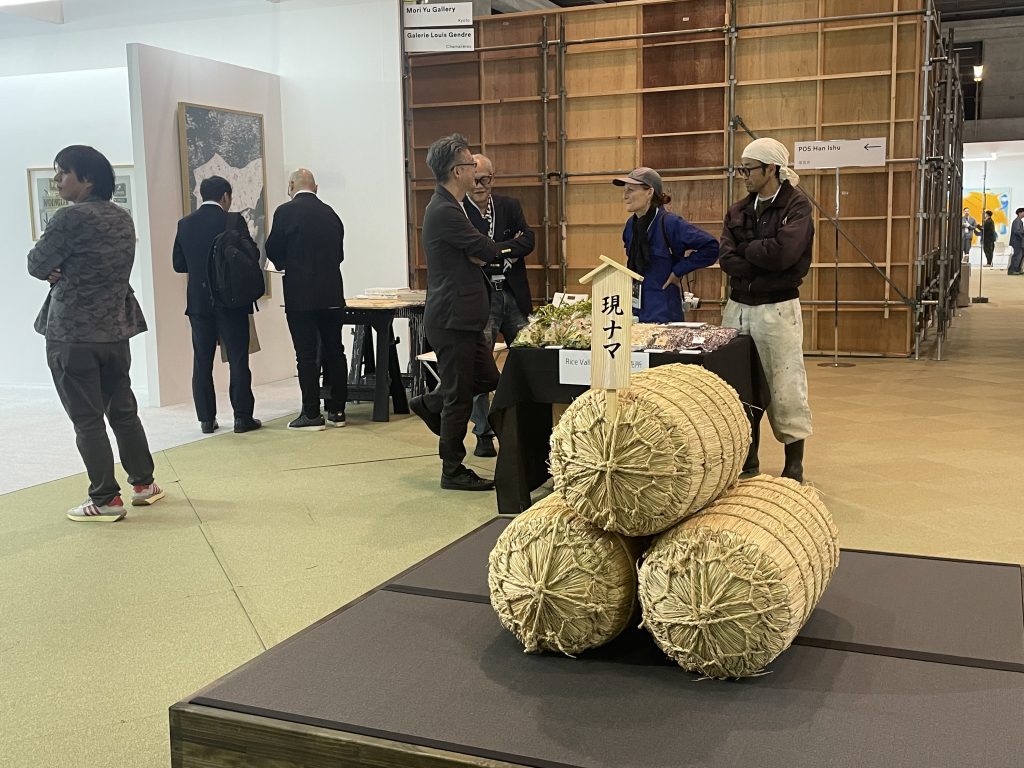
Gennama by the Kyoto-based Ken + Julia Yonetani artists and organic farmers is a thought-provoking installation commenting on the true worth of labor, food, and the current economic system. The work was presented at ACK 2023’s public program. Photo: Vivienne Chow.
Some of the participating gallerists, both Japan-based and international, said they appreciate the collaboration model, as it facilitates working as partners and introducing one another’s artists and clients.
“The existence of a curatorial fair is key,” said Yukako Yamashita, ACK’s program director. “Japan’s art market is still not very big. At this phase, we just need to collaborate in order to make it bigger.”
The fair’s layout and booths were designed in a way to encourage visitors to embark on a journey of art discovery. Rather than seeing all the booth details down an aisle in a grid setting, the booths, made with recycled materials, were placed diagonally. The back of the booths created a visual barrier but at the same time functioned as a sort of palate cleanser for the eye, before fair-goers moved on to the next booth.
Yamashita sees ACK as an international fair organized by the local communities, a contrast to other fairs in the region. “We are keen on showcasing international galleries and artists, but what’s equally important is the respect to the local market and its uniqueness,” she said. “We care about the detailed communication with our galleries, and we appreciate their open-mindedness to this collaborative approach.”
This year’s ACK also featured 11 galleries presenting artists who have distinctive connections with Kyoto in the Kyoto Meetings section, which took over an extra hall at this year’s show. Berlin’s neugerriemschneider presented an elegant booth of Olafur Eliasson’s works inspired by Kyoto’s Zen Gardens. Kyoto-based Finch Arts showcased a group show of paintings and mechanical sculptures by three Japanese artists. The fair also presented a public program curated by Greg Dvorak featuring high-quality, thought-provoking large-scale installations.
Collaboration also extended to outside the fair, to the exhibitions and events taking place around the city of Kyoto. “The art fair is also hoped to function as a platform to cultivate the city,” Yamashita said. “ACK is not just a a place to buy and sell art.”
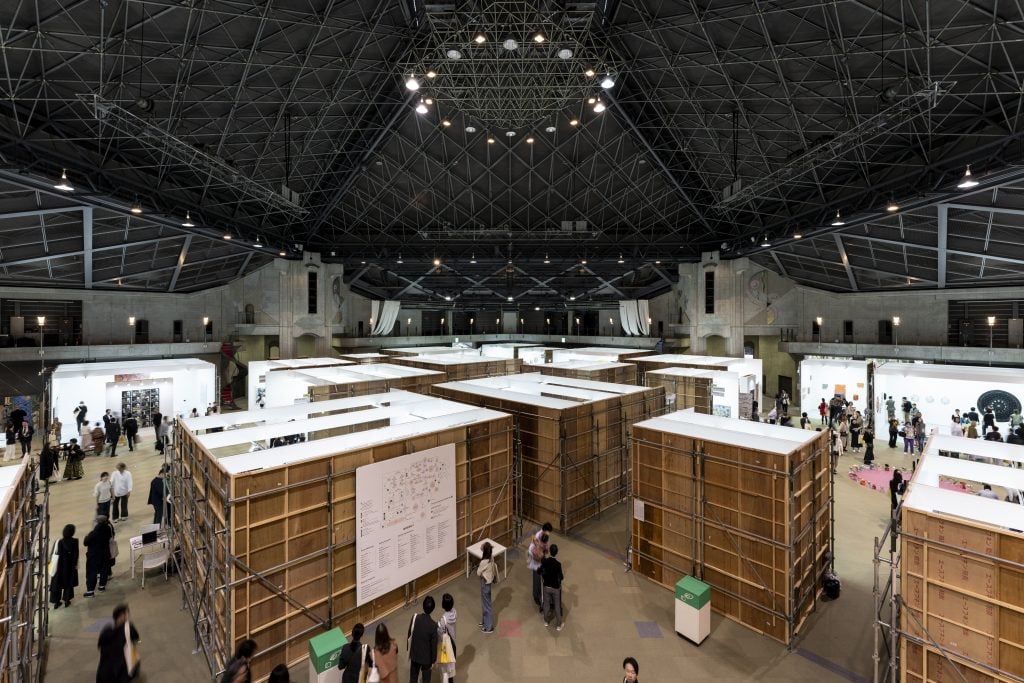
Art Collaboration Kyoto (ACK) 2023. Courtesy of ACK, photo by Moriya Yuki.
Another distinctive feature of ACK is the price point. The government-backed fair is heavily sponsored by the private sector, which helped keep booth fees comparatively low. One gallerist who has exhibited in many fairs across Asia and Europe over the past year said ACK was the most affordable to attend. The ease of financial pressure, especially amid the current global economic uncertainties and the weak Yen, in the case of Japan, allows galleries to take risks, presenting works by young artists selling at affordable prices.
ACK also obtained “bonded” status for the second time this year, allowing international exhibitors to be exempted from the 10 percent sales tax that would’ve otherwise been imposed on any work brought into Japan prior to a sale.
Most of the works at the fair had an asking price of under $100,000, although a handful were asking around $200,000.
Many galleries reported steady sales throughout the weekend.
SCAI the Bathhouse and Axel Vervoordt’s joint-booth sold a large-scale work by Bosco Sodi for more than $100,000 to a Japanese collector. Misako & Rosen and 47 Canal sold four paintings by Shimizu for a total of $200,000. neugerriemschneider sold a work by Eliasson to a Japanese collector. Kyoto’s Shibunkaku and Galerie Crèvecoeur sold several works by Fujita Tsuguharu for more than 18 million Yen ($119,000) in total.
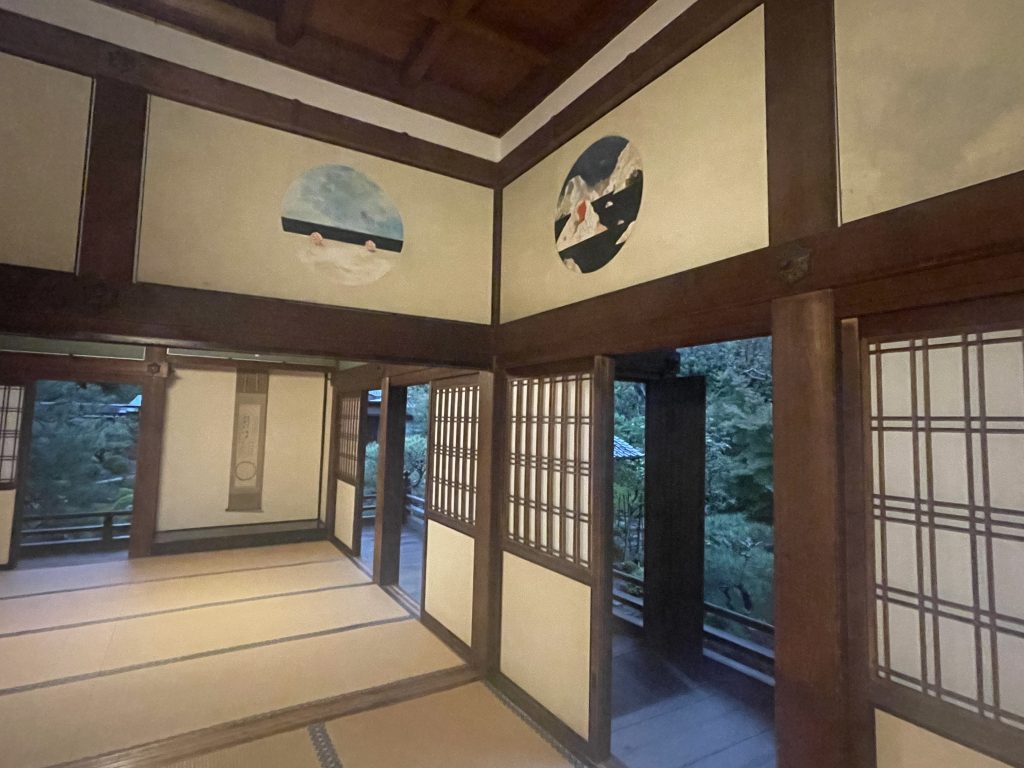
New paintings by Harold Ancart featured in exhibition “Bird Time” at Ryosokuin Temple in Kyoto, coinciding with ACK’s opening. The show is presented by Contemporary Art Foundation, founded by Japanese collector and entrepreneur Yusaku Maezawa. Photo: Vivienne Chow.
Tokyo-based gallery Con_, which opened just a year and a half ago, teamed up with Peter Augustus from Dallas to present a group show of six Japanese artists. They sold works including the quirky mechanical sculptures by the 24-year-old Taiki Yokote at under $2,000.
Yoshiaki Inoue, director of Osaka’s Yoshiaki Inoue Gallery, which hosted Hong Kong’s Rossi & Rossi, said ACK’s format helps to introduce international galleries to Japan.
“Some art fairs in Japan are very domestic, and we hope to make it more international here,” said Inoue, a member of the fair’s selection committee. “It has been difficult for them to come especially the past few years because of Covid. This format and size fit Japan’s context.”
Inoue, a veteran gallerist, noted that Japanese collectors bought a lot of expensive Impressionist works in the past. After the economic bubble burst in the 1990s, people who endured the aftermath did not dare buy expensive artworks. But this could be changing, he said.
“We are seeing more younger collectors coming in, mostly buying contemporary works ranged between $1,000 and $10,000,” Inoue said. “But the prices are going up. [The young collectors] belong to a new generation that does not have the memory of the economic bubble.” Companies are also starting to collect contemporary artworks. “It’s nice for Japan to start again,” he said.
ACK is set to return to Kyoto from November 1 to 3, 2024.
More Trending Stories:
Four ‘Excellently Preserved’ Ancient Roman Swords Have Been Found in the Judean Desert